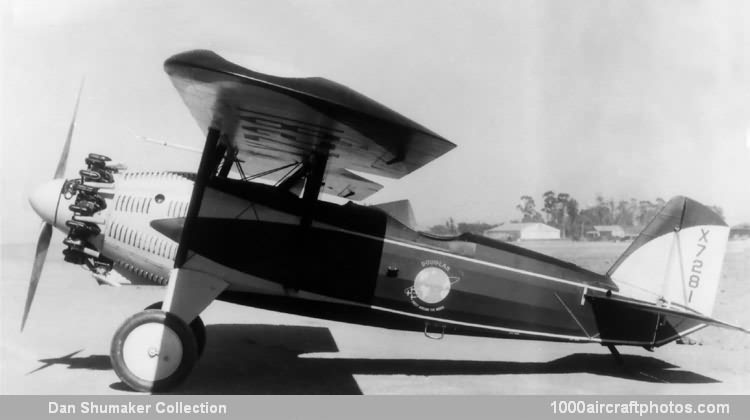07/31/2009. Remarks by Johan Visschedijk: "As in their first attempt with the Commuter, Douglas elected to use the monoplane configuration for a new attempt at penetrating the private aircraft market. However, whereas the Commuter had high-mounted wings, the DA-1 marked Douglas's first experience with the parasol monoplane configuration.
Design work on the DA-1 was begun in 1926 but progressed at a slow pace, as the company's limited engineering staff was kept busy with the basic design of new military types and the modification and improvement of aircraft already in production. Compared with the Commuter, which had just begun flight trials, the DA-1 was conceived as a markedly different aeroplane, with emphasis on sturdy construction and dependability rather than on low manufacturing and operating costs.
Twice as heavy as the Commuter, the DA-1 was powered by a 220 hp Wright Whirlwind nine-cylinder radial enclosed in a conical-shaped cowling with protruding cylinder heads and a two-blade propeller with large spinner. The fuselage was of chrome-molybdenum structure, the wings had Russian birch spars and ribs with plywood covering, whilst the fabric covered tail surfaces and the cabin floor were of duralumin. Accommodation was provided for one pilot and one or two passengers in tandem open cockpits, and quickly disconnected dual controls were fitted in the front cockpit for pilot training.
Ordered by Ambassador Airways Inc, the DA-1, registered NX7281, was first flown in September 1928 and, after completing its tests at Santa Monica, was flown to El Paso, Texas, to be demonstrated during the air races held there in the autumn of 1928.
After the races the aircraft, piloted by Eric Springer and carrying Donald Douglas, took off from El Paso for Santa Monica. However, shortly after take off the engine stopped. Springer succeeded in making an emergency landing and he and his passenger walked out unhurt. Unfortunately, as one of the landing gear legs had been torn off and one wing damaged, the aircraft was not repaired and Douglas did not pursue his second attempt at producing a private aircraft."
